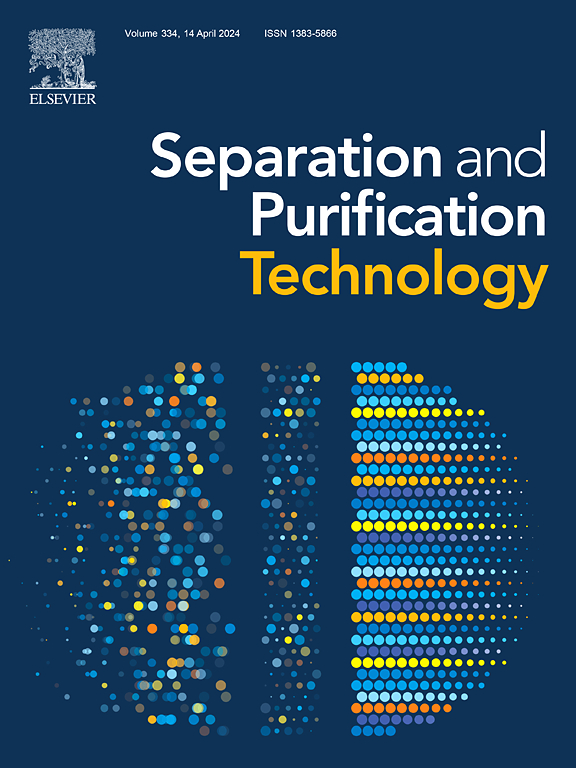Amino-mediated interfacial regulation of alkalized Ti3C2Tx to enhance urea adsorption capacity
IF 9
1区 工程技术
Q1 ENGINEERING, CHEMICAL
引用次数: 0
Abstract
Urea is widely used in agricultural fertilizer production, but there is a risk of it flowing into soil and water sources. Excessive urea can cause algal blooms or toxic algal blooms, which can accumulate in food sources and poison wildlife and even humans. Effective removal of urea is the key to ensuring environmental safety. Here, we propose a scheme of introducing carboxymethyl chitosan (CMC) onto the surface of alkalized Ti3C2Tx using amino groups as bridges. There is electrostatic attraction between the positive charge carried by chitosan and the negative charges generated by urea ionization. This electrostatic interaction promotes the adsorption of urea by chitosan. CMC reacts with the amino groups on the surface of Ti3C2Tx to form amide bonds, which can stabilize the CMC. The urea adsorption capacity of CMC-L/Ti3C2Tx was tested under different experimental conditions. The results showed that CMC-L/Ti3C2Tx can adsorb urea at super-fast speed, and the adsorption equilibrium can be reached in 20 min, with a maximum adsorption capacity of 108.54 mg/g, and has good stability. After 5 cycles, the removal rate of urea was still above 60 %. Therefore, introducing carboxymethyl chitosan on the surface of Ti3C2Tx has high potential for environmental protection.


氨基介导的碱化Ti3C2Tx界面调控提高尿素吸附能力
尿素在农业肥料生产中被广泛使用,但存在流入土壤和水源的风险。过量的尿素会导致藻华或有毒藻华,这些藻华会积聚在食物来源中,毒害野生动物甚至人类。有效去除尿素是保证环境安全的关键。本文提出了一种以氨基为桥接基团将羧甲基壳聚糖(CMC)引入碱化Ti3C2Tx表面的方案。壳聚糖携带的正电荷与尿素电离产生的负电荷之间存在静电吸引。这种静电相互作用促进了壳聚糖对尿素的吸附。CMC与Ti3C2Tx表面的氨基反应形成酰胺键,使CMC具有稳定作用。在不同的实验条件下测试了CMC-L/Ti3C2Tx对尿素的吸附能力。结果表明,CMC-L/Ti3C2Tx对尿素的吸附速度超快,在20 min内即可达到吸附平衡,最大吸附量为108.54 mg/g,且具有良好的稳定性。经过5次循环后,尿素的去除率仍在60%以上 %。因此,在Ti3C2Tx表面引入羧甲基壳聚糖具有很高的环保潜力。
本文章由计算机程序翻译,如有差异,请以英文原文为准。
求助全文
约1分钟内获得全文
求助全文
来源期刊

Separation and Purification Technology
工程技术-工程:化工
CiteScore
14.00
自引率
12.80%
发文量
2347
审稿时长
43 days
期刊介绍:
Separation and Purification Technology is a premier journal committed to sharing innovative methods for separation and purification in chemical and environmental engineering, encompassing both homogeneous solutions and heterogeneous mixtures. Our scope includes the separation and/or purification of liquids, vapors, and gases, as well as carbon capture and separation techniques. However, it's important to note that methods solely intended for analytical purposes are not within the scope of the journal. Additionally, disciplines such as soil science, polymer science, and metallurgy fall outside the purview of Separation and Purification Technology. Join us in advancing the field of separation and purification methods for sustainable solutions in chemical and environmental engineering.
 求助内容:
求助内容: 应助结果提醒方式:
应助结果提醒方式:


